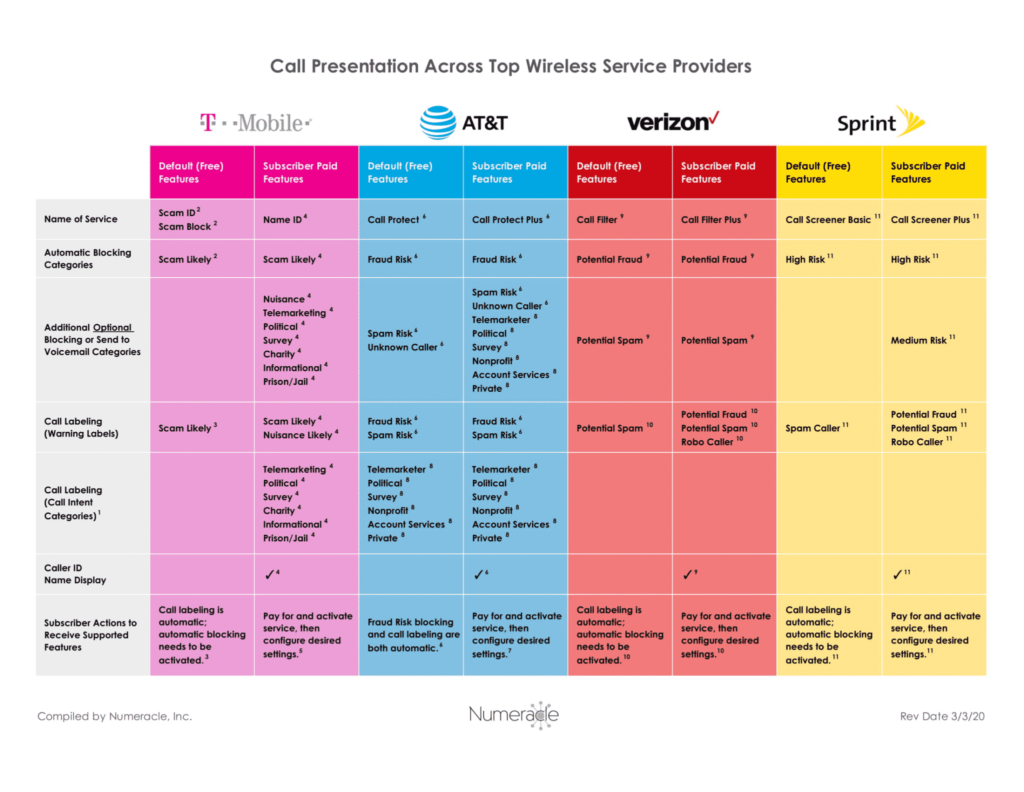How to Prevent Your Calls From Being Blocked or Labeled as Spam

Start Making More Calls Today
Not sure which solution would be the best fit for your needs? We can work with you to find a solution that’s right for your business.
get a free quoteWithout a call blocking & labeling solution, it’s difficult to know what’s actually happening to your calls after you dial. Oftentimes though, abnormally low connection rates can be a telling sign that your calls either aren’t going through or are being mislabeled.
Why Your Calls May Be Improperly Blocked & Labeled
If you’re dealing with unusually low connection rates you may be wondering how calls coming from your legitimate collection agency, call center or other business could be blocked or improperly labeled. Unfortunately, businesses calling legally from legitimate phone numbers get improperly blocked & labeled surprisingly often. The worst part is, without an outside solution, you won’t know how your calls are being labeled or which of your phone numbers are being blocked. Fortunately, we do know some of the underlying factors that can cause legitimate calls to be blocked or improperly labeled.
Call Analytics Factors
Each major carrier works with call analytics companies to establish a score for your phone number or call. We know this is true for the four major carriers: T-Mobile, AT&T, Verizon, and Sprint. These factors can cause your phone call or number to be blocked or labeled as spam:
- Inconsistent traffic
- Suspicious spikes in call volume
- Time of day
- Repeated dialing attempts made to a single phone number in a short period of time
- Consumer complaints
- Misleading voicemails
FCC Default Call Blocking Initiatives
Under the FCC’s default call blocking initiatives, the default option provided by carriers to consumers is that calls classified as scam or fraud are either blocked completely or sent straight to voicemail before ringing the consumer’s device.
Although this is the default option that carriers provide, if you are blocked by one carrier, that does not automatically mean you will be blocked by all carriers. This is due to the differing weights each assigns to the call analytics factors mentioned above when deciding on how to classify your call/number.
Free vs. Paid Call Transparency Plans
Just as being blocked by one carrier does not mean you will be blocked by all carriers, your calls can be labeled or blocked differently depending on the call transparency plan of the consumer or client you’re calling. So even within the same carrier, there is no guarantee that a phone number will be blocked or labeled a certain way every time you dial out. Whether the consumer is using the carrier’s default or paid call transparency features can determine what happens to your call after you dial. Here’s a detailed look at the default/free and paid plans that each of the four major carriers offer to consumers:

Because each of the four major carriers use different visual warning labels for call labeling, you can use this to your advantage. For example, if a consumer complains about your calls they might mention how your call is being labeled. Take note of this because you may notice a trend that shows your calls being improperly labeled by certain carriers more than others.
3 Tips to Prevent Your Calls From Being Blocked or Labeled as Spam
These outbound dialing best practices can reduce your chances of being blocked or labeled improperly and help you improve your connection rates. Although these can be effective without the use of an outside vendor, our partner Numeracle’s services can show you which of your phone numbers are being improperly blocked or labeled.
See what the power of Numeracle can do for you.
This allows for efficient decision-making as it relates to your outbound dialing strategy. These tips are effective when used alone, but even more effective when combined with a call blocking & labeling solution.
Tip #1: Stay Conscious of Call Volume
How many outbound dialing attempts are you making to the same phone number each day? Consider spreading out your dialing attempts made to the same phone number over a longer period of time. A large number of dialing attempts made to the same contact during a short period of time can be a major red flag for call analytics services, increasing the chances of your call being blocked or labeled as spam.
Consent does not mean consent to call the consumer 12+ times per day! Not only do call analytics services monitor this, but excessive call volume can be bothersome to consumers and may cause them to file complaints. These consumer complaints can be detrimental to the reputation of your phone number. So detrimental that even when using an outside vendor like Numeracle, your call can be labeled as spam under these circumstances.
Tip #2: Assign a Purpose to Each Phone Number
Consider assigning phone numbers to specific use cases. For example, use one phone number to communicate with people you’ve had previous contact with and use a different phone number to cold call with. This will help you maintain the reputation of the phone number that your contacts recognize. If you begin experiencing abnormally low connection rates with the number you use to cold call, then you know it’s time to switch that number out for another.
Tip #3: Be Consistent With Brand Representation
Call analytics services make best guesses on who they perceive is calling from a certain phone number. This is why brand consistency is key! Make sure the company name associated with your phone numbers matches how your agents introduce themselves when the consumer picks up. Being truthful and upfront about why you are calling and which company you are with can also help reduce consumer complaints.
About The Speaker
About The Author
Alex Villafranca
Alex is the CEO, co-founder and Head of Revenue at Arbeit, a better outbound communication software that makes businesses more profitable.